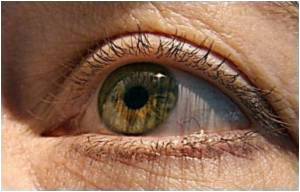
“The use of NIR in healing eyes stressed by bright light has now been established, in animals,” says Dr Krisztina Valter, a Chief Investigator in the ARC Centre of Excellence for Vision Science and Australian National University. “Now work has begun on the use of red light in human patients. Testing the effect of the light treatment is one aspect of this work, the other is to develop devices that are more accessible, more convenient and cheaper for patients to use.”
Dr Valter explains that red light at a wavelength of 670 nanometres is best as it is absorbed by an enzyme which is key to the energy production of the cell: “It enhances the genes and processes needed to produce energy and fight against the activation of genes potentially lethal to vision cells.”
She says that the NIR wavelength is also available in sunlight, but the wide range of lights with different wavelengths makes it impossible for us to absorb light at 670nm without also damaging other parts of our vision, causing more harm than good to our sight.
“An example of this is the UV light that can damage our skin as well as our eyes; it damages our cornea and lens. Other parts of the spectrum can damage the back of our eye, the retina and destroy our vision cells.”
“Knowing that light is necessary for our sight, the key lies in locating the particular wavelength in the light spectrum that is best for our vision – and shining it on our eyes."
Advertisement
Light induced damage of our sight applies particularly to people whose workplace is out in the sun, such as construction workers, farmers, fishermen and sportspeople, says Dr Valter. Although these are more at risk, anyone who has had excessive or long-term exposure to the sun without wearing sunglasses can suffer significant damage. It also applies to welders and others whose work involves exposure to very bright lights.
Advertisement
The research has brought new hope for these people, as it is demonstrating that some of the damage may be simply, safely and cheaply reversible or further damage could be prevented, using NIR treatment.
Dr Valter and her team are in the process of establishing Phase 1 of human trials to test NIR light in human patients. They anticipate the treatment will be used as a supplement or in some cases even as an alternative to surgical treatment.
Source-Medindia











